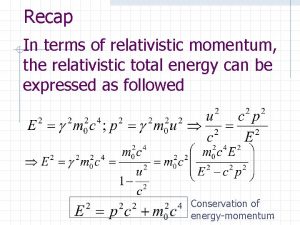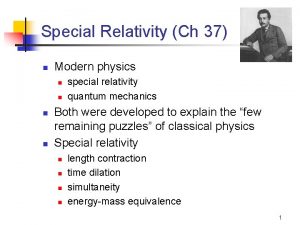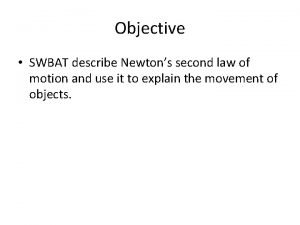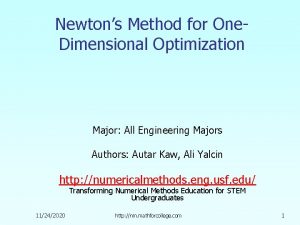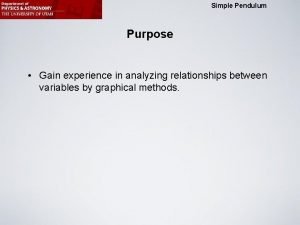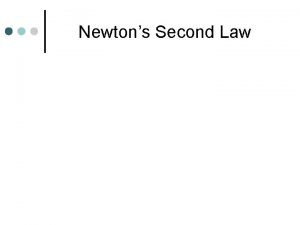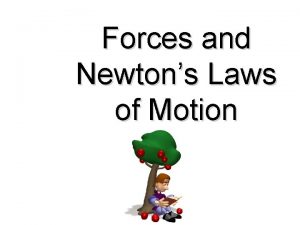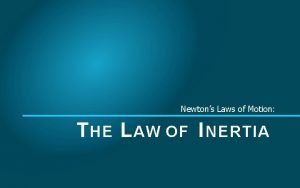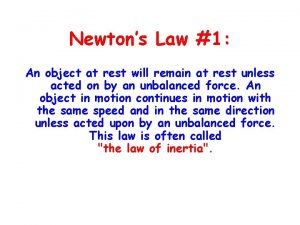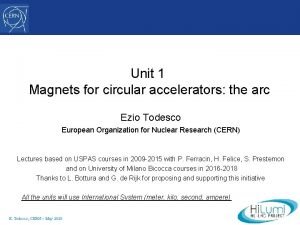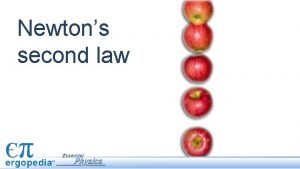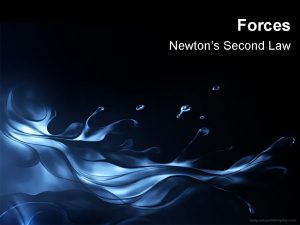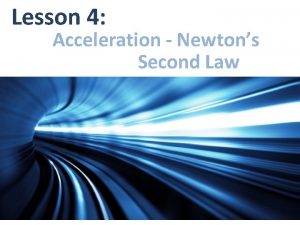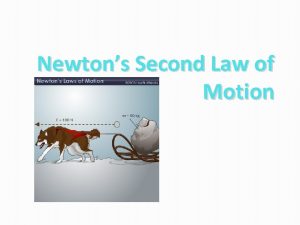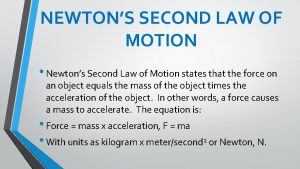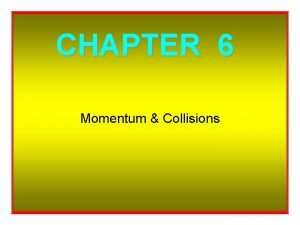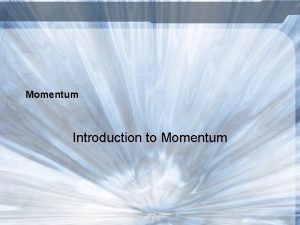Relativistic Momentum Question Would you expect Newtons second


















- Slides: 18

Relativistic Momentum ØQuestion: Would you expect Newton’s second law F=ma to hold at high velocity? ØAnswer: No, a constant force can accelerate a particle to v>c ØAnswer: No, certainly something is different since in a Galilean transformation the force and acceleration are the same. This is not true for a Lorentz transformation. 1

Relativistic Momentum Ø Galilean transformation n We showed a=a’ and F=F’ Ø Lorentz transformation Ø We might try starting with F=dp/dt 2

Newtonian Relativity Ø Note Newton’s laws are valid in both frames n n The force and acceleration are the same in both frames There is no way to detect which frame is moving and which is at rest 3

Relativistic Momentum ØFrank (F) is in K with a ball of mass m ØMary (M) is in K’ with a ball of mass m ØFrank throws his ball along y with velocity u 0 ØMary throws her ball along –y’ with velocity u 0 Ø The balls collide elastically 4

Relativistic Momentum 5

Relativistic Momentum Ø Frank sees the momentum change of his ball Ø Frank sees for Mary’s ball Ø Frank sees the momentum change of Mary’s ball 6

Addition of Velocities Ø Recall the addition of velocities in special relativity 7

Relativistic Momentum Ø Momentum is not conserved in the y direction! Ø Because we strongly believe in the conservation of momentum, let’s modify the definition of momentum 8

Relativistic Momentum Ø Frank sees the momentum change of his ball Ø Frank sees the momentum change of Mary’s ball 9

Relativistic Momentum ØThus Frank sees that momentum is conserved in the x and y directions using ØLikewise Mary would see that momentum conservation holds in her frame as well 10

Relativistic Momentum ØNotes n n Unfortunately γ is used for both Usually we write them out when they both come into play In these equations m=m 0 is the rest mass Sometime we interpret γm as the relativistic mass but that is not standard 11

Relativistic Energy Ø Let’s assume that the relativistically correct form of Newton’s law is given by Ø The validity of this assumption can be determined by examining its consequences Ø Aside, are Newton’s first and third laws relativistically correct? 12

Relativistic Energy Ø In classical mechanics the work done by a force in moving a particle from one position to another equals the change in kinetic energy 13

Relativistic Energy Ø We can evaluate the integral by writing 14

Relativistic Energy ØThen ØThus T = γmc 2 – mc 2 15

Relativistic Energy ØNow at low speeds we can use the binomial expansion ØTo find as expected 16

Relativistic Energy ØWe define the total energy E n E = kinetic energy plus rest energy E = T + mc 2 n E = γmc 2 n 17

Relativistic Energy Ø We also have for E Ø Thus E 2=p 2 c 2 + m 2 c 4 n E = mc 2 for p=0 n 18
 Relativistic momentum
Relativistic momentum Relativistic momentum
Relativistic momentum Physics
Physics Describe newtons second law
Describe newtons second law Newtons second kaw
Newtons second kaw Newtons second kaw
Newtons second kaw Newtons second laq
Newtons second laq 3 newton's laws
3 newton's laws Second law of newton
Second law of newton What is newton's second law example
What is newton's second law example Newtons second law
Newtons second law Newton’s law of action-reaction
Newton’s law of action-reaction Newtons second aw
Newtons second aw Newtons second law example
Newtons second law example Would like
Would like I would rather
I would rather Costa level 1 questions examples
Costa level 1 questions examples Relativistic circular motion
Relativistic circular motion Relativistic thinking example
Relativistic thinking example
